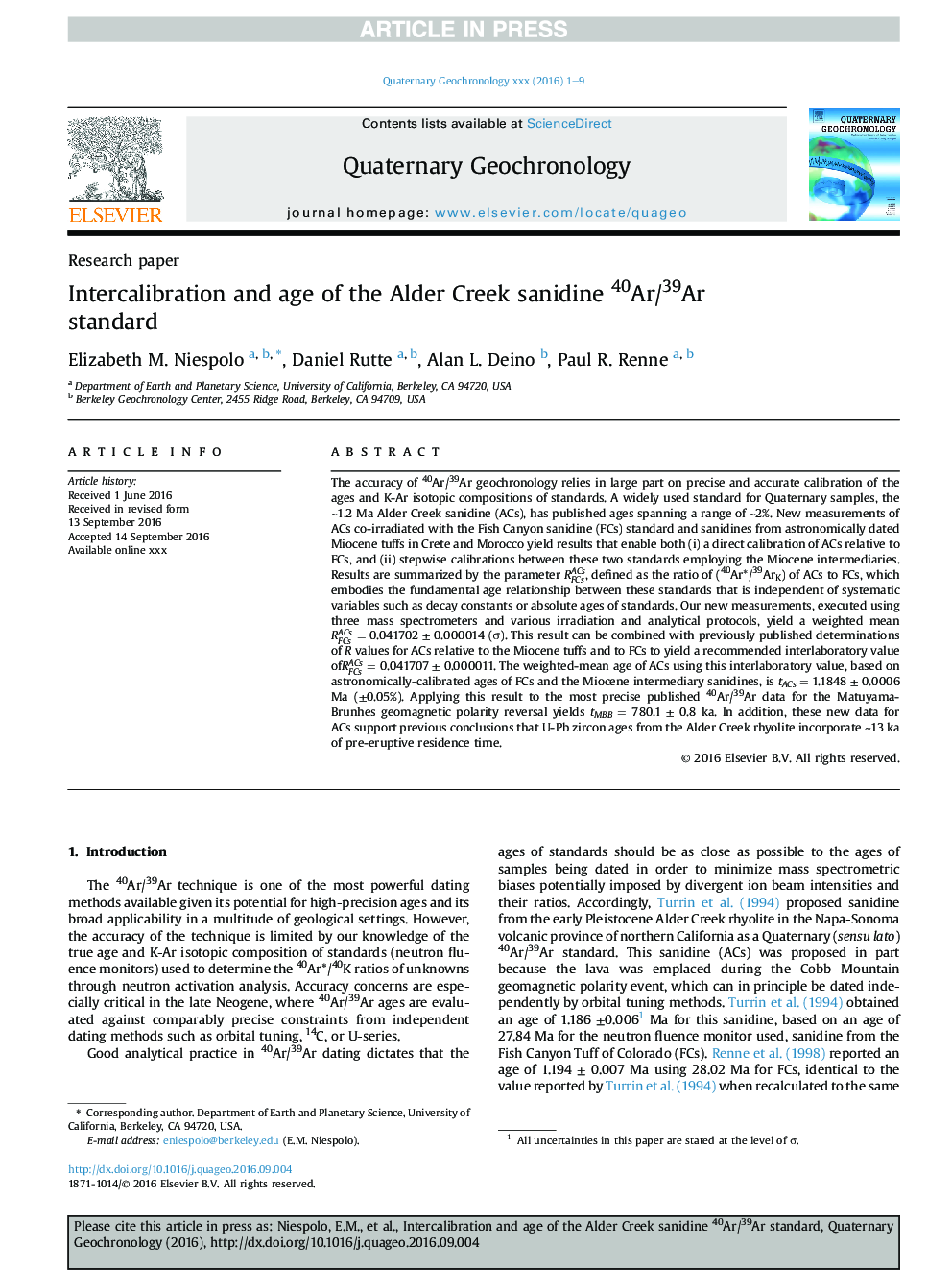| Article ID | Journal | Published Year | Pages | File Type |
|---|---|---|---|---|
| 5785004 | Quaternary Geochronology | 2017 | 9 Pages |
Abstract
The accuracy of 40Ar/39Ar geochronology relies in large part on precise and accurate calibration of the ages and K-Ar isotopic compositions of standards. A widely used standard for Quaternary samples, the â¼1.2 Ma Alder Creek sanidine (ACs), has published ages spanning a range of â¼2%. New measurements of ACs co-irradiated with the Fish Canyon sanidine (FCs) standard and sanidines from astronomically dated Miocene tuffs in Crete and Morocco yield results that enable both (i) a direct calibration of ACs relative to FCs, and (ii) stepwise calibrations between these two standards employing the Miocene intermediaries. Results are summarized by the parameter RFCsACs, defined as the ratio of (40Ar*/39ArK) of ACs to FCs, which embodies the fundamental age relationship between these standards that is independent of systematic variables such as decay constants or absolute ages of standards. Our new measurements, executed using three mass spectrometers and various irradiation and analytical protocols, yield a weighted mean RFCsACs = 0.041702 ± 0.000014 (Ï). This result can be combined with previously published determinations of R values for ACs relative to the Miocene tuffs and to FCs to yield a recommended interlaboratory value ofRFCsACs = 0.041707 ± 0.000011. The weighted-mean age of ACs using this interlaboratory value, based on astronomically-calibrated ages of FCs and the Miocene intermediary sanidines, is tACs = 1.1848 ± 0.0006 Ma (±0.05%). Applying this result to the most precise published 40Ar/39Ar data for the Matuyama-Brunhes geomagnetic polarity reversal yields tMBB = 780.1 ± 0.8 ka. In addition, these new data for ACs support previous conclusions that U-Pb zircon ages from the Alder Creek rhyolite incorporate â¼13 ka of pre-eruptive residence time.
Related Topics
Physical Sciences and Engineering
Earth and Planetary Sciences
Geochemistry and Petrology
Authors
Elizabeth M. Niespolo, Daniel Rutte, Alan L. Deino, Paul R. Renne,
